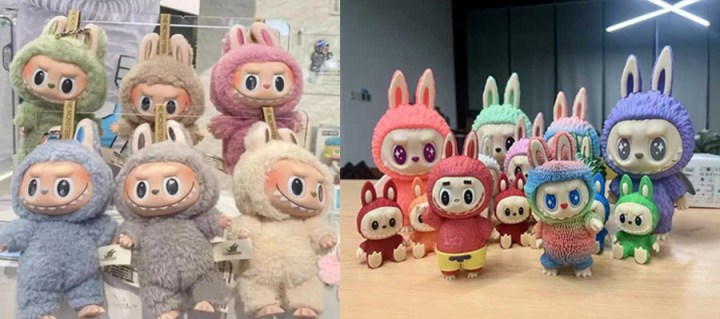[co-author: Kendall Lilly]
Most companies would love to have their product become a viral sensation, but in the age of viral media and “internet dupes,” companies are forced to fire on all cylinders to successfully secure and defend the intellectual property rights when one of their products takes off unexpectedly. Just look at the newest internet-sensation plush toy: Labubu.
Labubus are fuzzy, monster-like toys that have gained popularity among a variety of ages, finding a large fanbase on TikTok. These toys are the creation of Kasing Lung, the illustrative artist of the book series, “The Monsters.” Following the publication of this series, Lung released a toy version of the “monsters.” And in 2019, Lung teamed up with POP MART, a Chinese toy company, to take this toy line to the next level. POP MART did exactly that, although its success did not occur overnight. This new monster collection toy line received the name—“Labubu.”
Despite Labubu’s launch in 2019, POP MART did not seek trademark rights until after the beginning of the toy’s viral success in 2024. And even then, POP MART filed only for the registered word mark “Labubu.” Since 2024 Labubu replicas have been popping up all over the internet, including dupes touting the name “Lafufu.”
Obtaining registered trademarks for these internet sensation toys pose challenges, especially when filing after going viral, like POP MART. While there are well-established rules in U.S. trademark law that the first to use the mark in commerce has trademark priority, this is does not completely curtail the filing frenzy. Not to mention, securing trademark rights early can help companies enforce their rights after the inevitable “dupes” surge the market.
Labubu 3-D Printed Look-Alike

One option for POP MART may be to assert trade dress claims. Squishmallows, a different internet-viral plush toy, have also faced widespread copyright and trademark issues from internet dupes. Squishmallow’s manufacturer, Kelly Toys Holdings, filed for trademark protection of the word mark “Squishmallow” in 2018, several years before the peak of its internet fame in 2023. However, like POP MART, Kelly Toys did not file for trade dress protection for its plush, egg-shaped line of toys. But with its rise in internet fame (and therefore dupes), Kelly Toys has taken an active stance in the enforcement of its trade dress rights. In February 2024, Kelly Toy sued Build-A-Bear Workshop, Inc. in Kelly Toys Holdings, LLC v. Build-A-Bear Workshop, Inc., 2:24-cv-01169, alleging that Build-a-Bear’s new line of plush toys had the same distinctive trade dress as Squishmallows.
For a trade dress infringement claim in California to succeed, the plaintiff must “clearly articulate” its claim to give the defendant adequate notice of the total image, design, and appearance of the trade dress.
In its complaint, Kelly Toys described the Squishmallow trade dress to include: egg-shaped plush toys depicting various characters, simplified Asian style Kawaii faces with repeating rounded graphics, embroidered facial features, short-pile velvety velour-like fur, and a squeezable marshmallow feel. Build-A-Bear moved to dismiss the complaint, arguing that the Plaintiff’s description of its trade dress was overbroad, vague, and included “generic and functional features commonly found in plush products.”
However, the California Central District Court disagreed with Build-A-Bear, concluding that the focus of a trade-dress analysis is not about the individual features but rather the “overall visual impression that the combination and arrangement [] those elements create.” The court also disagreed with Build-A-Bear’s argument that to assert a protectable trade dress, Kelly Toys must allege a trade dress that is “common to all items in the series or line.” Build-A-Bear argued that because Kelly Toys’s trade dress description could not apply to its over 3,000 product line of Squishmallows, it could assert no trade dress whatsoever. The court held that this sort of fact-intensive, product-by-product analysis is inappropriate at the pleading stage, but the court noted that it could revisit the consistent-overall-look test at the summary judgment stage with a developed factual record.
A trade dress claim by Labubu may face similar opposition. Like the Squishmallows in Kelly Toys, Labubu’s signature features—its expressive eyes, oversized head, and mischievous expression—taken together may create a recognizable aesthetic associated with the Labubu brand. However, also like Squishmallow’s range of plushies, there are distinctive features across the iterations of Labubu’s expanding product line.
POP MART has already taken some legal action. Earlier this year, a Chinese court ruled in favor of POP MART, finding the sale of 3D printed Labubu duplicates to be a violation of Chinese copyright laws. Time will tell if POP MART uses other tools to protect Labubu products and whether they can do so before the market moves on to the next fad.
[View source.]